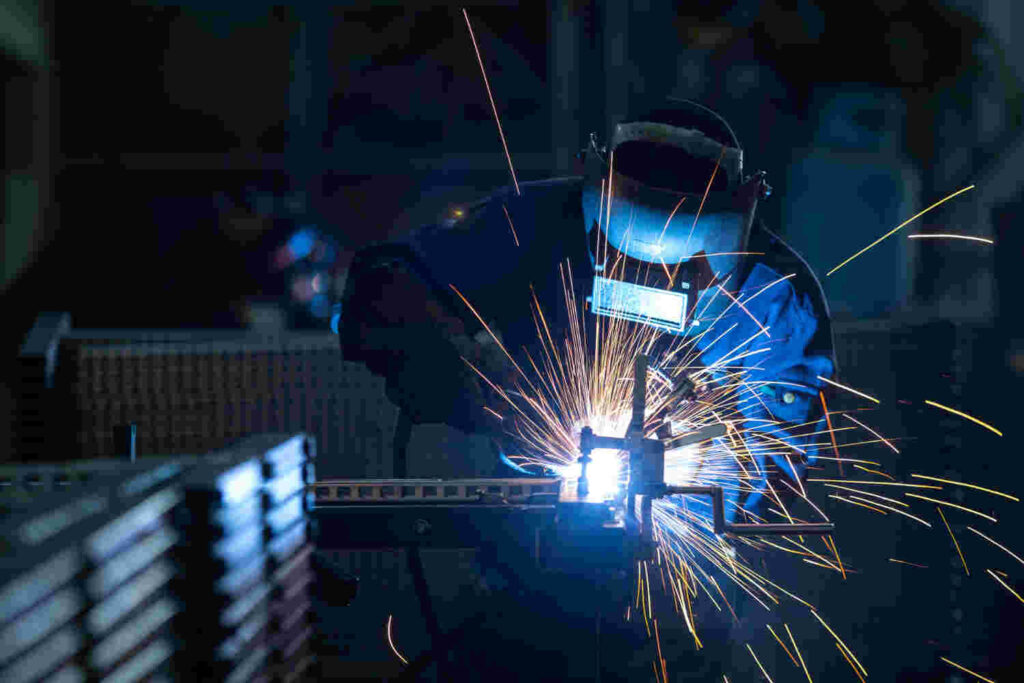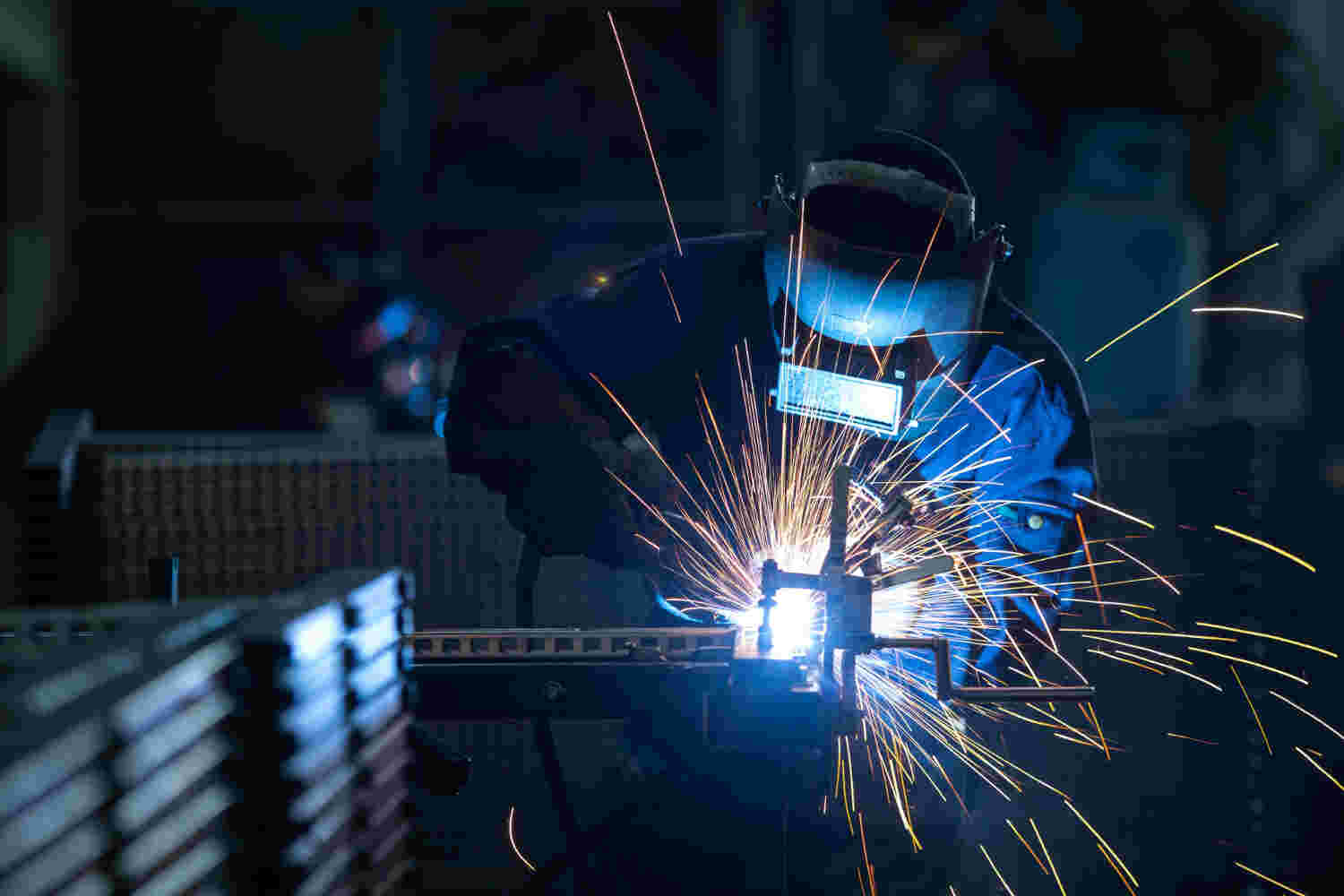So you’re curious about how those sleek, lightweight golf shafts are made? Well, wonder no more! In this article, we’ll take a behind-the-scenes look at the intriguing process of creating golf shafts.
From the initial selection of materials to the meticulous crafting and testing, you’ll gain an appreciation for the precision involved in producing these essential components of the game. So, grab your clubs and get ready to discover the fascinating world of golf shaft manufacturing!

Materials Used in Golf Shafts
Graphite
Graphite is a lightweight material commonly used in golf shafts. It offers flexibility and helps golfers achieve greater swing speed. Graphite shafts are especially popular among players with slower swing speeds or those seeking a softer feel.
The material’s ability to absorb vibrations also contributes to enhanced feedback and a more comfortable feel during impact.
Steel
Steel shafts are known for their durability and stability. They have been a staple in the golf industry for many years and are favored by players with faster swing speeds. Steel shafts provide a solid and consistent feel, offering control and accuracy to golfers.
They are less flexible compared to graphite shafts, which can lead to a lower trajectory and a firmer feel during impact.
Titanium
Titanium has gained popularity in recent years for its lightweight yet strong properties. It is often used in combination with other materials, creating a composite shaft that combines the benefits of both graphite and steel.
Titanium shafts offer increased strength, stability, and control, making them a popular choice among professional golfers.
Composite Materials
Composite shafts are made by combining different materials such as carbon fiber, fiberglass, and other composites. These shafts provide a mix of characteristics, allowing manufacturers to fine-tune the performance of the shafts to cater to specific players’ needs.
Composite materials offer a wide range of options in terms of flex, torque, and weight distribution, making them versatile for golfers of various skill levels.
The Design and Construction of Golf Shafts
Step 1: Determining Design Specifications
Before manufacturing a golf shaft, designers must determine the desired characteristics of the shaft, including flex, torque, weight, and length. This involves considering factors such as the player’s swing speed, tempo, and personal preferences. The design specifications serve as a blueprint for the manufacturing process.
Step 2: Choosing the Shaft Material
Based on the design specifications, the appropriate shaft material is selected. This decision depends on factors such as the player’s skill level, swing speed, and desired performance characteristics. Graphite, steel, titanium, or composite materials are chosen accordingly.
Step 3: Preparing the Materials
Once the shaft material is chosen, it undergoes a preparation process. This includes cutting the material to the desired length, removing any excess material, and sanding the surface to ensure a smooth finish. The preparation process ensures that the materials are ready for the construction phase.
Step 4: Creating the Inner Core
The inner core of the golf shaft is responsible for providing strength, stability, and the desired flex. For graphite shafts, carbon fibers are typically layered to create a sturdy but flexible core. Steel shafts may use a solid steel rod as the inner core.
The design specifications play a crucial role in determining the number and orientation of the layers.
Step 5: Building the Outer Layers
After the inner core is constructed, additional layers are added to enhance the durability, performance, and aesthetics of the golf shaft. These layers may include materials such as fiberglass, resin, or metal alloys.
The outer layers are strategically placed to optimize flex, torque, and weight distribution.
Step 6: Adding Graphics and Finishing Touches
To give the shaft its final appearance, graphics, and branding elements are added. This may involve applying paint, decals, or logos to the surface. The shaft is then finished with a protective coating to ensure longevity and resistance to wear and tear.
The Manufacturing Process of Golf Shafts
Step 1: Preparing the Mandrel
A mandrel, or mold, is used to shape the golf shaft. The mandrel is carefully prepared by applying a release agent to prevent the shaft from sticking to the mold during the manufacturing process. The mandrel is also preheated to ensure proper curing of the materials.
Step 2: Applying the Resin
The chosen resin is applied to the mandrel to act as an adhesive for the layers of materials. The resin is carefully mixed and applied in a controlled manner to ensure even distribution and complete coverage.
Step 3: Wrapping the Layers
The layers of materials, including the inner core and outer layers, are wrapped around the mandrel. The materials are carefully aligned according to the design specifications to achieve the desired characteristics and performance.
Step 4: Curing the Shaft
Once the layers are wrapped, the golf shaft is placed in a curing oven or subjected to heat to initiate the hardening process of the resin. Curing times and temperatures vary depending on the materials used and the desired final properties of the shaft.
Step 5: Trimming and Sanding
After the curing process, the golf shaft is removed from the mold and excess materials are trimmed. The shaft is then sanded to ensure a smooth and uniform surface.
Step 6: Coating and Finishing
To protect the shaft and give it a polished appearance, a protective coating is applied. This coating helps prevent scratches and adds durability to the shaft. Graphics, branding elements, and finishing touches are then added to give the shaft its final appearance.
The Role of Technology in Golf Shaft Manufacturing
Computer-Aided Design (CAD)
Computer-Aided Design plays a crucial role in the design phase of golf shaft manufacturing. Designers use CAD software to create precise 3D models of the shaft, allowing for accurate measurements and adjustments before the manufacturing process begins.
Computer-Aided Manufacturing (CAM)
Computer-aided manufacturing involves using computer-controlled machinery to produce golf shafts based on CAD designs. CAM systems automate the manufacturing process, ensuring consistency and precision throughout production.
Robotic Manufacturing
Robotic manufacturing has revolutionized the efficiency and accuracy of golf shaft production. Robots can perform tasks such as cutting, sanding, and applying coatings with incredible precision and speed, resulting in consistent and high-quality shafts.
Advanced Testing Equipment
Advanced testing equipment, such as swing analyzers and flex measurement devices, allows manufacturers to evaluate the performance characteristics of golf shafts. This data helps in refining the design and manufacturing processes to optimize performance and meet the demands of players.
Quality Control in Golf Shaft Production
Inspection of Raw Materials
Before manufacturing begins, raw materials are thoroughly inspected to ensure they meet specific quality standards. This includes checking for any defects or inconsistencies that may adversely affect the performance of the golf shaft.
Measurement and Tolerances
Throughout the manufacturing process, measurements are taken to ensure that the shaft’s dimensions and specifications align with the design. Strict tolerances are maintained to guarantee consistent performance and adherence to the desired characteristics.
Weight Sorting
Weight sorting involves classifying the finished golf shafts based on their weight. This process ensures that the shafts within a set have consistent weight and balance, allowing golfers to have a more consistent experience when using their clubs.
Flex and Torque Testing
Flex and torque testing is performed to assess the flexibility and twisting characteristics of the golf shafts. This helps ensure that the posts have the desired flex and torque properties, allowing golfers to achieve optimal performance and feel.
Performing Swing Tests
Swing tests involve attaching the golf shaft to a testing rig and subjecting it to various swing forces and speeds. This helps evaluate the durability and performance of the shaft, ensuring that it can withstand the forces exerted during a golf swing.
Different Types of Golf Shafts
Graphite Shafts
Graphite shafts are often chosen by players seeking increased swing speed, distance, and a softer feel. They are generally lighter and more flexible than steel shafts, making them ideal for golfers with slower swing speeds or those looking for a more forgiving experience.
Steel Shafts
Steel shafts are known for their durability, stability, and consistent performance. They offer a firmer feel and are favored by golfers with faster swing speeds who prioritize control and accuracy. Steel shafts provide a solid and reliable option, especially for more advanced players.
Hybrid Shafts
Hybrid shafts combine the best of both worlds, offering the forgiveness and flexibility of graphite shafts with the stability and control of steel shafts. These shafts are designed to optimize distance, accuracy, and control, catering to a wide range of players.
Women’s and Senior Shafts
Women’s and senior shafts are specifically designed to cater to the needs of golfers with slower swing speeds or players with specific physical requirements. These shafts generally have lighter weights and increased flexibility, allowing players to generate more clubhead speed and achieve optimal distance.
Customization and Fitting
Understanding Player’s Requirements
Customization begins with understanding the player’s requirements, preferences, and playing style. Factors such as swing speed, tempo, and feel preferences are taken into consideration to tailor the shaft to the individual golfer.
Shaft Length and Flex
Customizing the length and flex of the shaft is crucial for optimizing performance. The right length ensures that the golfer achieves a comfortable and efficient swing, while the appropriate flex maximizes power transfer and accuracy.
Customized Graphics and Logos
Many manufacturers offer the option of customizing the appearance of golf shafts with personalized graphics, logos, and color schemes. This allows golfers to have a unique and customized look to their equipment.
Fitting Systems and Tools
Professional club fitters use fitting systems and tools to assess the golfer’s swing characteristics, such as launch angle, spin rate, and shot dispersion. This information helps determine the ideal shaft specifications for optimal performance and consistency.
Golf Shaft Innovations and Trends
Graphene and Nanomaterials
The introduction of graphene and nanomaterials into golf shaft manufacturing has opened up new possibilities for weight reduction and improved strength. These advanced materials offer enhanced performance characteristics, such as increased stability, while maintaining the desired flexibility.
Multi-Material Construction
Manufacturers are increasingly incorporating multiple materials, such as carbon fiber, titanium, and steel, into golf shafts to optimize performance. This allows for precise control over flex, torque, and weight distribution, resulting in customized shafts that cater to specific player needs.
Adjustable Shaft Technology
Adjustable shaft technology has gained popularity as it allows golfers to fine-tune their equipment to suit their swing characteristics and course conditions. Adjustable shafts offer versatility and the ability to make on-the-fly adjustments, providing golfers with greater control and customization.
Improvements in Aerodynamics
Advancements in aerodynamics have led to the development of golf shafts with improved airflow characteristics. These designs reduce drag and increase clubhead speed, enhancing distance and overall performance.
Popular Brands and Manufacturers
Fujikura
Fujikura is a well-known brand in the golf industry, offering a wide range of high-quality graphite shafts. Their shafts are known for their consistency, performance, and advanced technology.
Aldila
Aldila is recognized for its innovative designs and premium graphite shafts. Their shafts are favored by professional golfers and amateurs alike for their performance and stability.
True Temper
True Temper is a leading manufacturer of steel shafts, known for their durability, control, and consistent performance. Their shafts are trusted by numerous professional golfers around the world.
Graphite Design
Graphite Design is renowned for its high-performance graphite shafts, offering a range of options tailored to different swing characteristics and preferences. Their shafts are known for their stability and consistency.
Project X
Project X is known for its premium steel shafts, targeting golfers seeking control, accuracy, and a solid feel. Their shafts provide a stable and consistent performance, making them popular among professional players.

